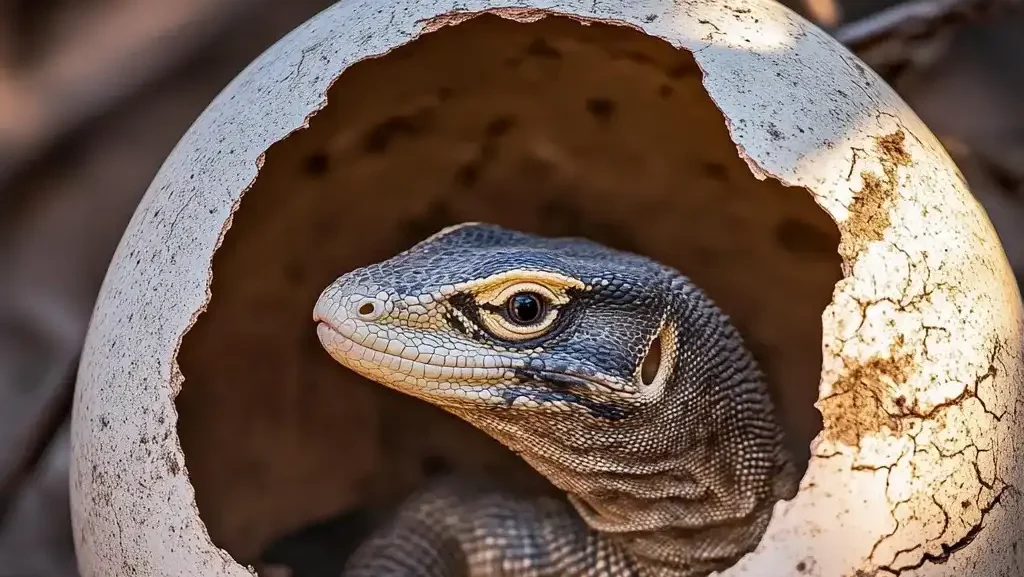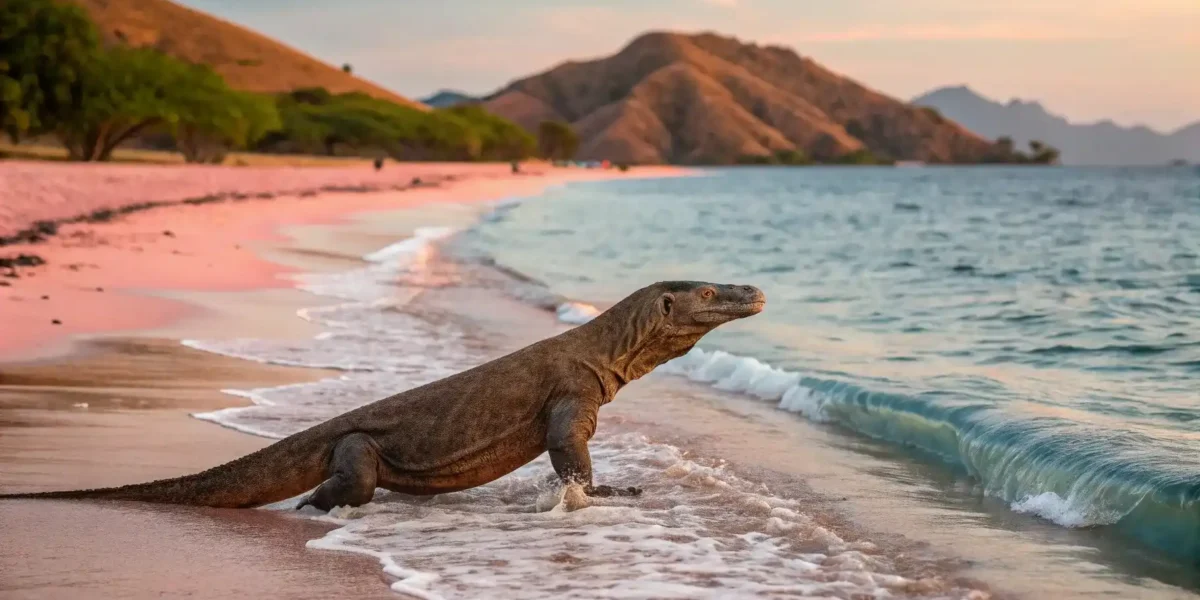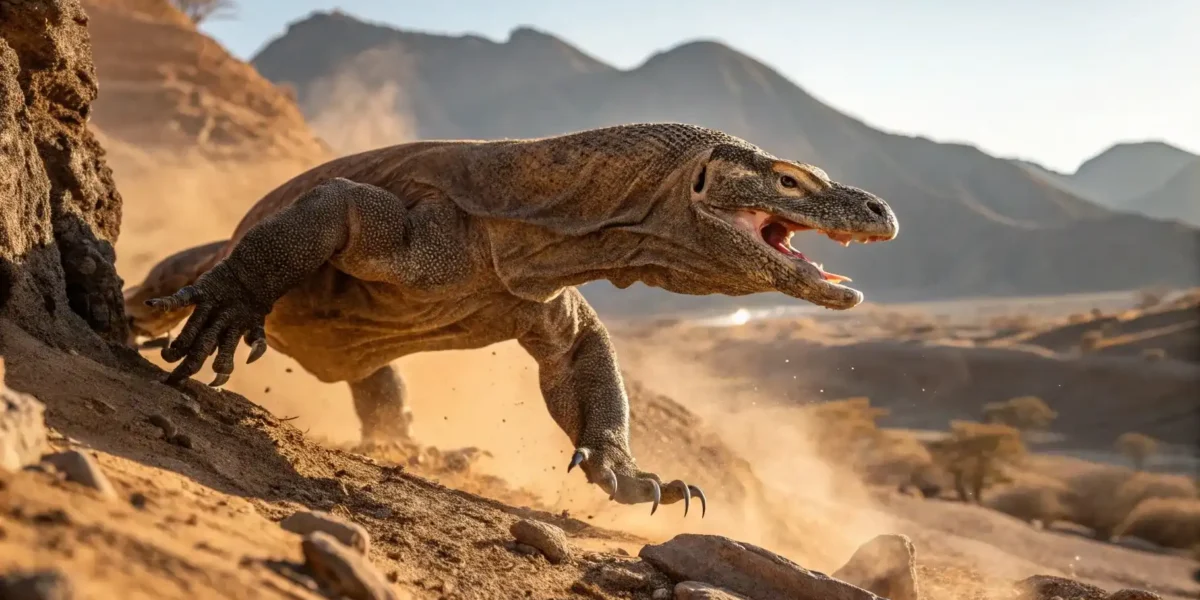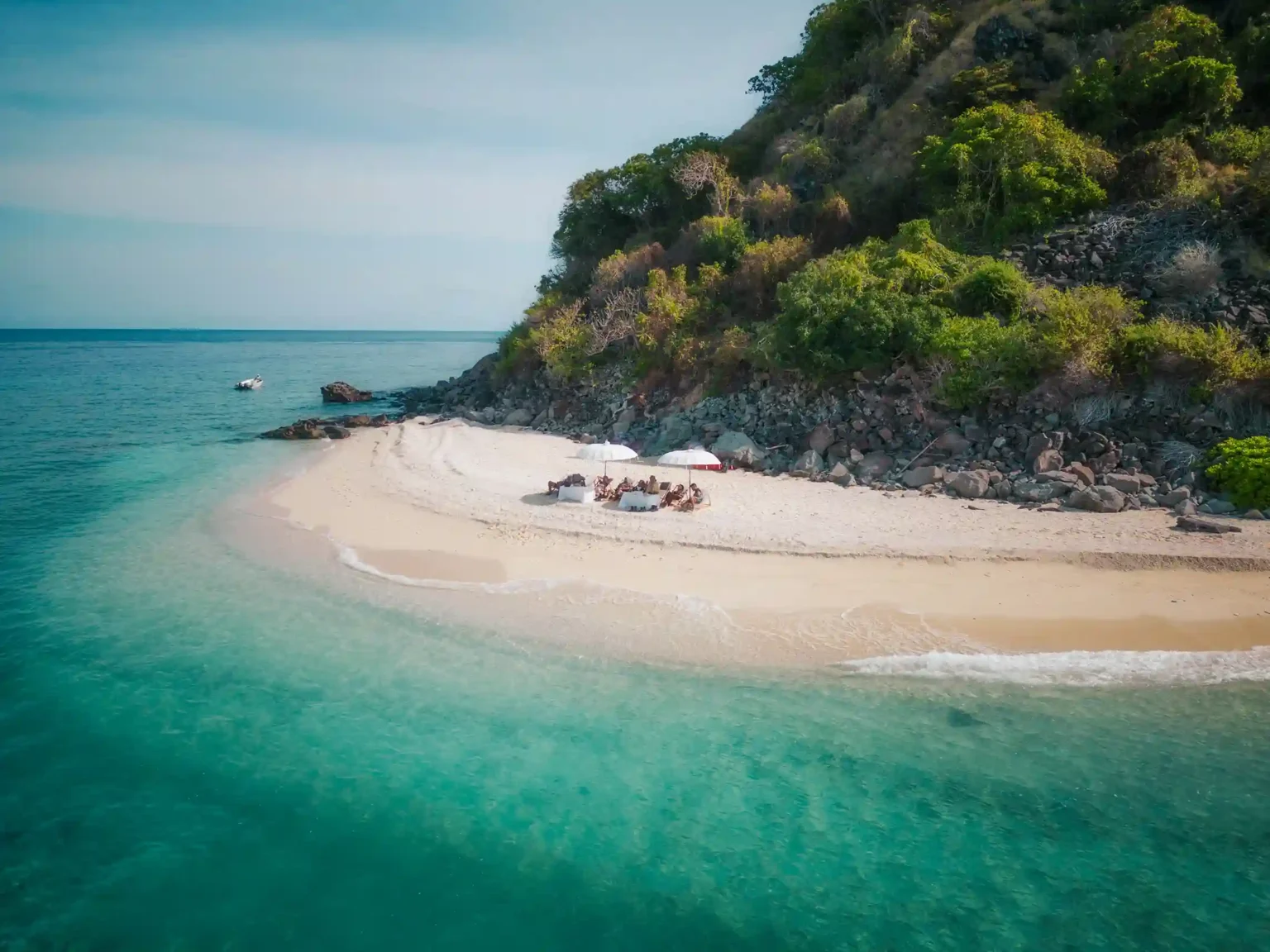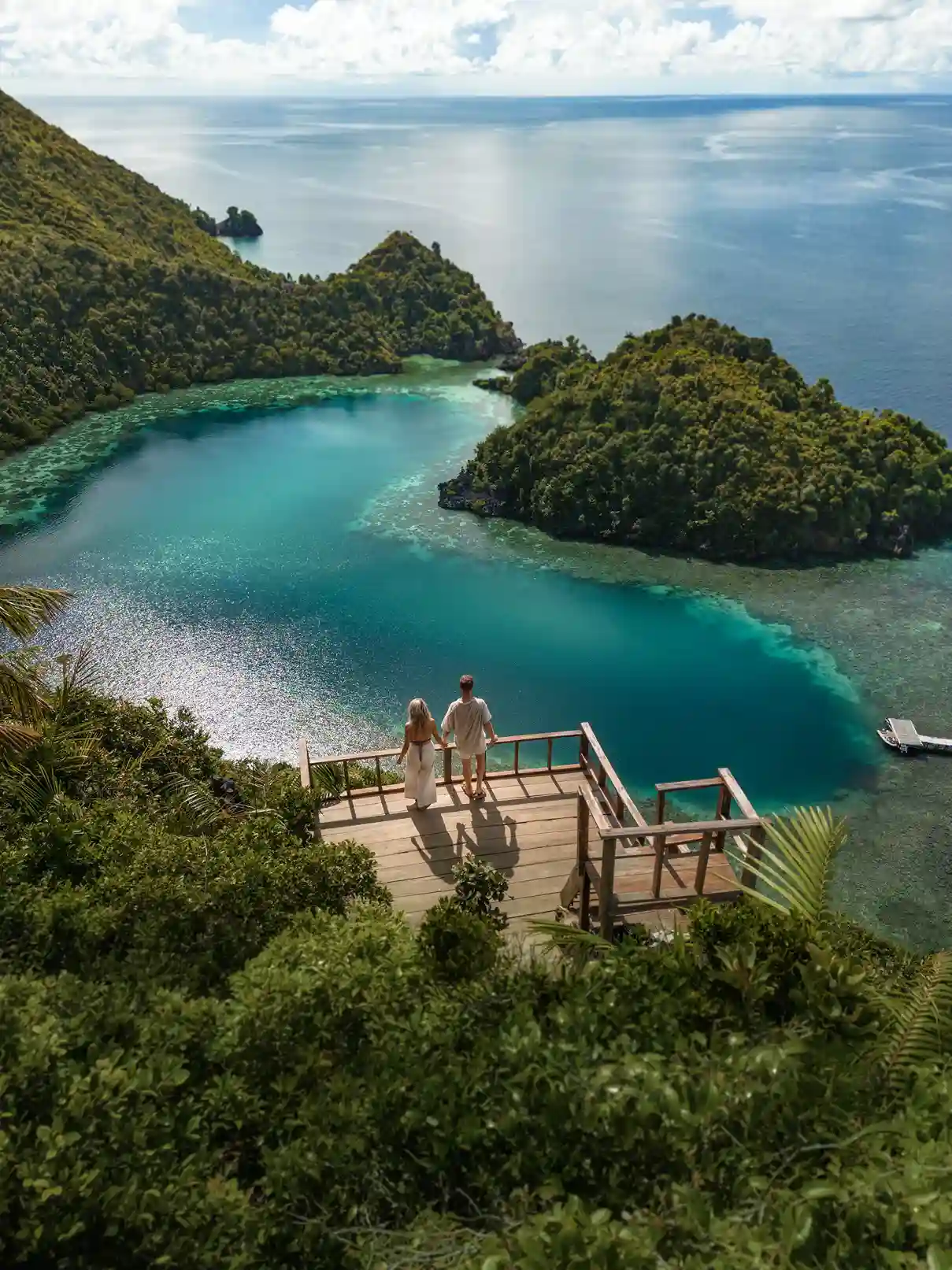Komodo dragons (Varanus komodoensis) are called “ancient dragons” because they are rare and cool. You can find them mostly in East Nusa Tenggara, especially in Komodo National Park which includes Komodo Island, Rinca, Padar and a few surrounding islands. These reptiles are the biggest lizards on Earth and top predators in their domain. Despite their scary reputation, Komodos have many more interesting things – especially when it comes to reproduction.
People are curious about the Komodo’s breeding cycle, like how many eggs they lay, when is their mating season and the fact that female Komodos can lay eggs without mating (parthenogenesis). Interested? Let’s dig in!
Komodos as Egg Laying Reptiles
We already know Komodos are egg laying reptiles but many don’t know how complicated their breeding process is. They don’t just lay a lot of eggs; they also have a specific mating season and a unique reproductive method rarely seen in other vertebrates.
Before we get into the details of egg laying, let’s take a look at some basic Komodo facts. They can grow up to 3 meters in length and weigh around 70-90 kilograms. Komodos have sharp teeth, strong jaws and saliva that carries bacteria that’s deadly to their prey. But they’re not always aggressive. They often ambush their prey, waiting patiently for the right moment.
Komodos also need hot environment, dry grasslands or savannas. If you’ve been to Komodo or Rinca Island, you’ve probably seen sun-baked fields with lontar palm trees. This is the habitat of the “ancient dragon”.
Mating Season: June to August

Komodos mate between June to August. During this time, males fight for females in a pretty dramatic way: they stand on their hind legs and push each other with their front legs to see who’s stronger.
You won’t always see this “ritual”. During mating season, Komodos hide. You won’t see them roaming around much during the day since most of them are in burrows or “homes” to hide and conserve energy.
Male dragons find females through scent. This hiding habit also fits their solitary nature. They interact more during mating season because males need to find females that are ready to mate. Once that’s over, they usually go back to living alone.
Female Komodos Can Lay Eggs Without Mating: Parthenogenesis
One of the most amazing scientific facts about Komodos is parthenogenesis which is when an egg can develop into an embryo without being fertilized by sperm. It’s a rare process in vertebrates but it’s been proven in Komodo dragons. Captive Komodo dragons have shown unique breeding behavior, laying unfertilized eggs that still hatch into male offspring, showing they can reproduce without direct male interaction.
How does it happen?
Some female Komodos in captivity have laid eggs and produced healthy hatchlings without mating with a male. Even more amazing, the eggs can hatch into fully formed, healthy individuals. A notable case is a Komodo dragon in Chester Zoo where a female laid unfertilized eggs that hatched into males, showing a unique reproductive ability of this species. Although it’s rare to see parthenogenesis in the wild (since females usually mate with males to ensure genetic diversity) it’s still a backup strategy.
Parthenogenesis helps Komodos to survive in isolated areas or areas with very few of their kind. If there are no males around, females can still reproduce but their offspring will have limited genetic diversity. Flora, the second known Komodo dragon to lay unfertilized eggs, laid 11 eggs, 7 of which hatched into males, a significant event in the study of the species.
Read more: How Big Are Komodo Dragons? Here’s Facts About Giant Creatures!
Egg Laying and Nesting Behavior
Female Komodos have remarkable nesting behavior to ensure the safety of their young. A female will usually select a safe location, a hillside or rocky outcrop, to dig her nest. This site selection is crucial to protect the eggs from predators. Interestingly, female Komodos often create decoy nests to mislead predators and protect the real nesting site.
Once the nest is prepared, the female will lay a clutch of 20-30 eggs. These eggs will incubate for 7-8 months. During this period the female will be vigilant, often covering the eggs with her body to keep them warm and protect them from threats. This behavior is crucial for the survival of the eggs as it deters predators and provides a stable incubation environment.
How Many Eggs Can Komodos Lay?
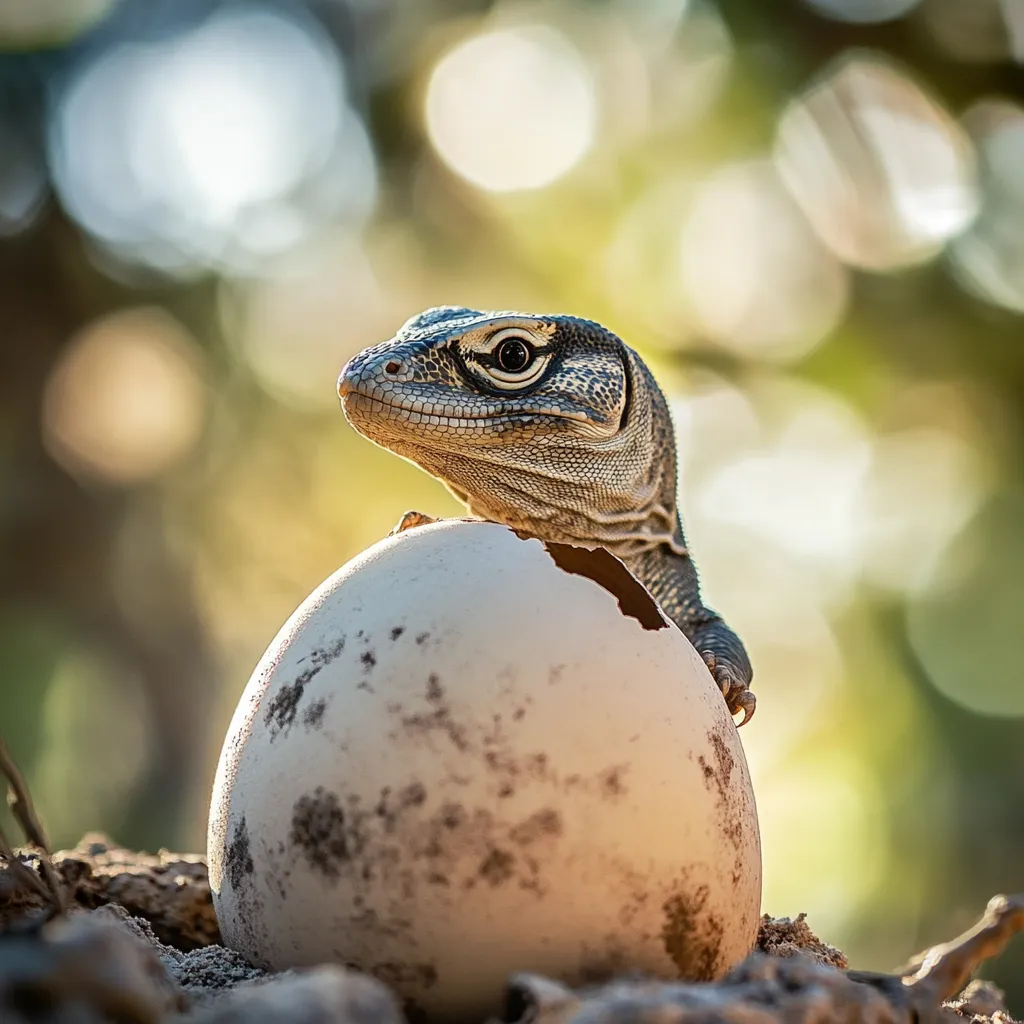
A common question is, “How many eggs can a female Komodo lay in one go?” On average a female can lay 15-30 eggs in one breeding period.
Note this is not a hard and fast rule but this is the usual range in the wild. Several factors can affect the number of eggs:
- Female’s Health: Females in good condition with a good food supply and a safe environment will lay more eggs.
- Age and Size: Older and larger females will lay more eggs but this is not a hard and fast rule.
- Food Availability: A healthy diet and good habitat conditions also play a role in reproduction.
15-30 eggs may seem like a lot but that doesn’t mean all eggs will hatch. Whether they hatch and whether the juveniles will survive depends on the environment and how well the mother can guard her nest.
How Long Does Incubation Take?
Now that you know Komodos can lay up to 30 eggs you might wonder about the incubation process. Female Komodos will dig a nest in the ground or use a mound built by a megapode bird (often called a scrubfowl) to lay their eggs.
Incubation period is usually 7-9 months. During this time the mother becomes protective. The male Komodo doesn’t help with egg care but the female will be territorial around her nest. She will keep other predators at bay, wild boars, snakes or even other Komodos.
Unlike some reptiles that abandon their nests after laying eggs, female Komodos will stay near the nest at least for the early stages of incubation. This vigilance helps the survival rate as many predators (including Komodos) will raid the nest if left unattended. After a while the mother will venture out to hunt and replenish her energy.
When the eggs are almost ready to hatch they will hatch in stages. Newborn Komodos are about 30 cm long. They will head for safer areas like trees to get away from predators (including adult Komodos). Young Komodo dragons have many challenges in their early life, they will live in trees to escape from predators including cannibalistic adult Komodo dragons.
Wild Komodo Dragons
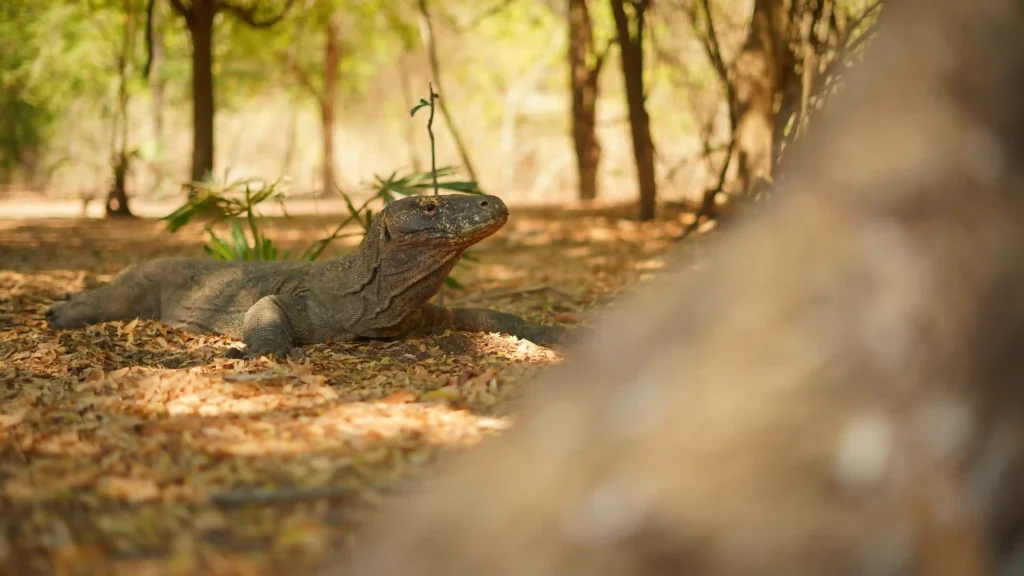
Wild Komodo dragons are magnificent creatures, the largest lizards in the world. They can grow up to 3 meters (10 feet) long and weigh up to 150 kg (330 pounds). Their scaly skin is brown or gray and provides a tough armor that blends in with the environment.
Adult Komodos are easily recognizable by the crest on their snout formed by bony plates. Their powerful legs and sharp claws are not just for show, they are for hunting and defense. With a long flat head and rounded snout Komodos are perfectly designed for a predatory life.
Habitat and Distribution
Komodos are found in a few islands in Indonesia, Komodo Island, Rinca Island, Flores Island, Gili Dasami Island and Gili Motang Island. These islands have various habitats, from dense forests to open savannas and grasslands. Komodos are well adapted to the hot and dry climate of these areas where daytime temperature can reach 35°C (95°F).
Despite the heat Komodos also thrive in areas with high humidity, especially in the forests and grasslands. Their ability to adapt to different environment is a proof of their resilience and evolutionary success.
Diet and Feeding Habits
Komodos are formidable carnivores with a wide variety of diet, deer, pigs, goats and even water buffalo. They also prey on smaller animals like birds, reptiles and amphibians. As ambush predators Komodos use their powerful legs and sharp claws to surprise their prey.
One of the most interesting part of their hunting technique is the use of their long forked tongue to taste the air and locate their prey. Once they have caught their target Komodos will use their powerful jaws to tear flesh and crush bone, often eat their prey whole. This efficient feeding method allows them to maximize their nutrition.
Unique Features and Adaptations of Komodo Dragons
Komodos have several unique features and adaptations that make them super survivors. One of their most famous trait is their saliva which contains over 50 different bacteria that can cause severe infection to their prey. This biological weapon ensures that even if a prey animal escapes it will likely die later from infection.
Their efficient digestive system allows them to eat a lot of food and then go for long period without eating. They also have a unique method of thermoregulation by using their powerful legs to dig burrows and escape the heat. Komodos can also survive for long period without water, they get moisture from their food and metabolic process.
These adaptations prove the evolutionary genius of Komodos to survive in one of the toughest environment on earth.
Komodo Dragons Population Dynamics and Conservation

Komodos can lay plenty of eggs but their numbers don’t grow fast. Serious threats to Komodo’s survival such as habitat loss, natural predators and cannibalism among Komodos themselves keep their population in check. Infant mortality rate (among juveniles) is high.
Today Komodo conservation is taken very serious in Komodo National Park. Rangers and researchers monitor nesting sites and supervise tourist activities to ensure the species can thrive. Research on raising Komodos in captivity started in the 1960s to understand their feeding behavior and reproduction which is crucial for conservation and breeding.
Conserving Komodos is not just about conservation of biodiversity, it also boost Indonesia’s tourism industry. Komodo National Park is listed in UNESCO World Heritage site—how precious and global this place is.
Why Visit Komodo Island?
For travelers Komodo Island and surrounding area offer an out of this world experience. You don’t just get to see wild Komodos up close you’ll also get to see rolling savanna hills, white sand beaches and vibrant marine life with corals and tropical fish. Komodos eat a lot of prey, you can see their dominance and unique feeding behavior.
Here are the reasons to visit Komodo National Park:
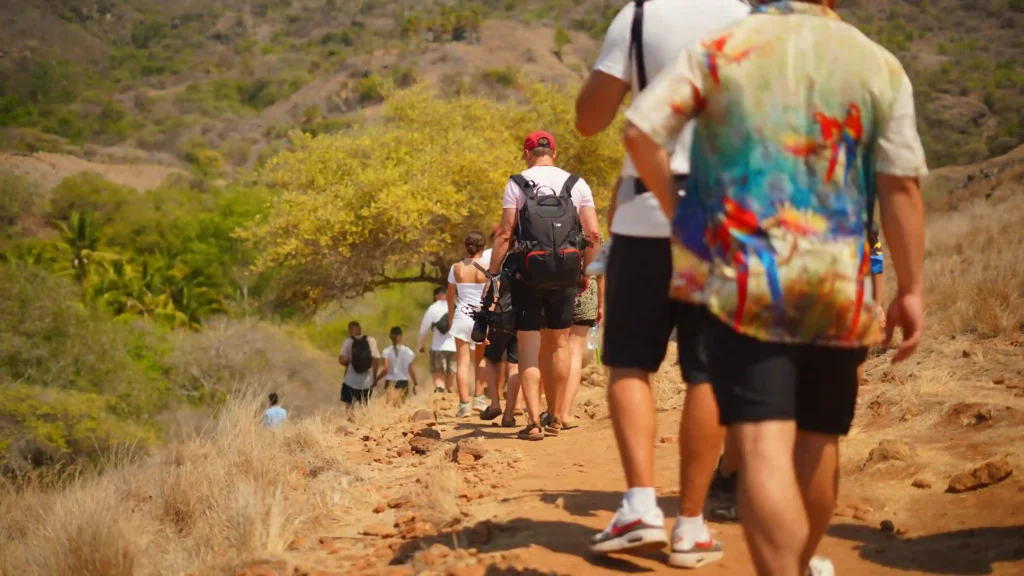


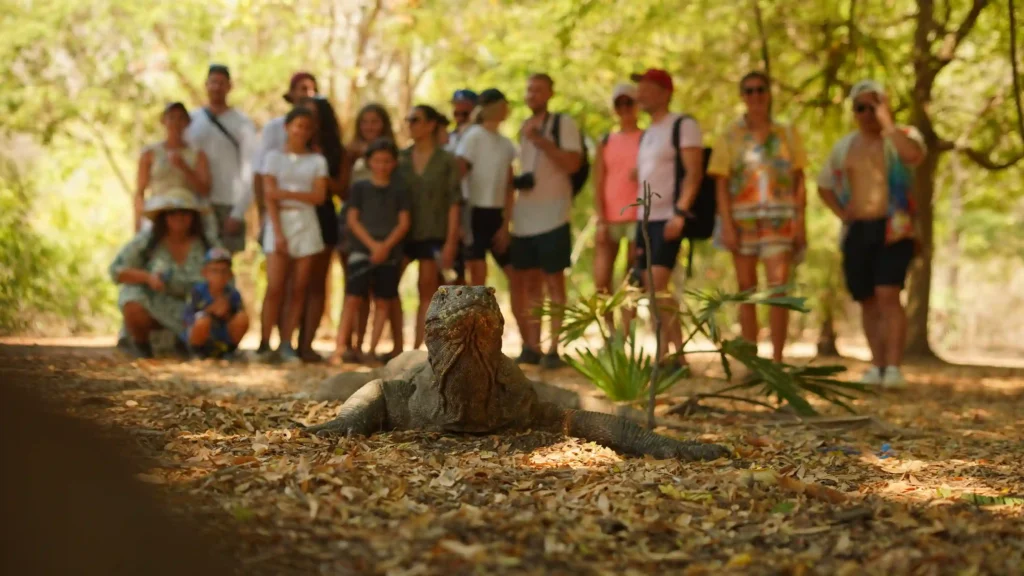
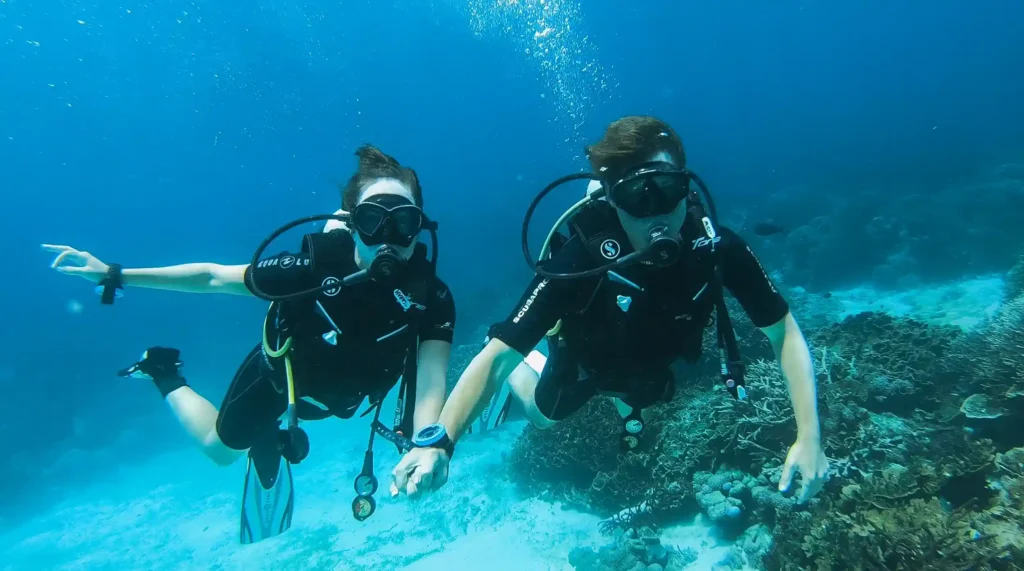

- Meet the “Ancient Dragons”: Seeing these iconic creature (found only in Indonesia) in their natural habitat is a once in a lifetime experience. Wild pigs and water buffalo are common prey of these big lizards, adding to the ecosystem dynamics.
- Breathtaking Landscapes: Hills and clear blue water form a stunning view. Many travelers hike to the hills to see the sunrise or sunset.
- World Class Diving: Both professional and beginner divers will love the underwater biodiversity, pristine coral reef and abundant marine life.
- Local Culture: While Komodo is famous for its dragons, the local community has its own culture to offer in your travel experience.
Safety Tips for Seeing Komodos

- Go with an Official Guide: Komodo National Park has rangers who know the terrain and the animals. Always follow their instruction.
- Keep a Safe Distance: Komodos may look slow but they can move fast if they feel threatened. Stick to 2-3 meters away or follow your guide’s direction.
- No Sudden Movement: Sudden movement can trigger predator instinct in Komodos. Stay calm and try to minimize noise.
- Don’t Feed Them: Feeding Komodos or tossing food to them disrupts their natural feeding behavior and can harm the ecosystem.
- Leave No Trash: Always bring back your trash. Everyone is responsible to keep Komodo National Park clean.
Explore Komodo with Komodo Luxury
Komodos are truly a natural wonder of Indonesia. From their big body to their egg laying process everything about them is unique. Mating season is from June to August during which Komodos hide in the burrows. Females can also reproduce through parthenogenesis but it’s rare in the wild.
Komodos produce saliva that help them to consume big prey and can swallow food whole. A female Komodo can lay 15-30 eggs in a season and the eggs will incubate for 7-9 months. Although that’s a lot of eggs, predators, environmental factors and extinction threats prevent the population to grow rapidly. That’s why conservation effort is crucial to preserve Komodo habitat in Komodo National Park.

Ready to see them in the wild? Book your Komodo Island Tour with Komodo Luxury now! Get premium packages and experience Komodo National Park with expert guides, top facilities and itinerary designed to make the most of your trip. Don’t miss to see Komodos mating, laying eggs and basking in the sun!







